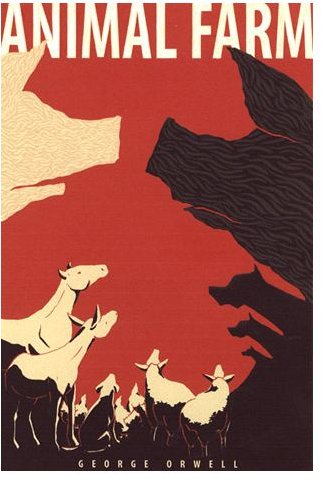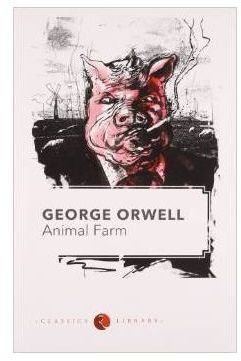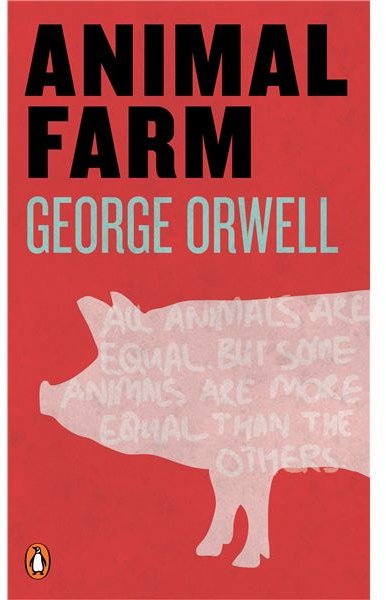Animal Farm by George Orwell: Study Guide & Sample Essay Questions
Book Summary
**
Old Major’s Vision
Old Major, an ancient boar on Mr. Jones’s Manor Farm, gathers all of the animals together to tell them of a vision that he had. His vision consists of a farm ruled by animals, in which there are no people around to rule the animals and oppress them. Old Major dies three days later, but the animals on the farm decide to build on his vision.
Snowball & Napoleon
Snowball and Napoleon are two pigs that take charge in creating “Animalism,” a philosophy built on Old Major’s vision. Together with the rest of the animals, they succeed in driving Mr. Jones off the farm, which is subsequently renamed “Animal Farm.” They develop several laws about the equality of animals and the inferiority of human practices and write them on the wall of the barn.
Snowball and Napoleon disagree on several issues, including whether Animal Farm should build a windmill to generate their own electricity, thus making them more self-sufficient. Snowball supports the windmill, but Napoleon opposes it. At a meeting to discuss the windmill, several dogs that Napoleon has trained chase Snowball off the farm. From the time of Snowball’s departure on, the pigs (led by Napoleon) take over the farm.
Pigs or Humans?
Suddenly, Napoleon decides that building the windmill is a good idea. All of the animals, and especially Boxer, the loyal workhorse, dedicate themselves to the building of the windmill.
When Boxer dies, Napoleon sells his body to the glue maker. Napoleon subsequently begins breaking every rule on the barn wall, but Squealer, his publicity spokesman, explains everything away with smooth talk. The pigs begin drinking whiskey, sleeping in a human bed, and making deals with human neighbors to benefit themselves. By the end of the book, the rest of the animals can’t tell the difference between the humans and the pigs.
Main Characters

Napoleon
Napoleon is one of the two pigs who profess to carry on Old Major’s dream. When Napoleon’s dogs drive Snowball off the farm, Napoleon becomes the new “ruler” and proceeds to break every rule of Animalism.
Napoleon, named after a non-Communist dictator, is obviously looking out only for himself. He even sells his most loyal worker, Boxer, to the glue maker, in order to get more money for himself. Like most dictators, he focuses on the young, represented by the pack of dogs Napoleon raises into vicious beasts, ready to harm or kill anyone who speaks out against him. He takes others’ ideas and claims them as his own, which is why he has to rearrange history in order to claim that the windmill was his idea, not Snowball’s.
Snowball
Snowball, in contrast to Napoleon, has some strong and logical ideas. He sticks to the principles of Animalism, other than the fact that he also agrees in the superiority of the pigs. Nevertheless, he teaches the rest of the animals to read, develops the idea of the windmill to make the farm more self sufficient, and avoids violence. Although Orwell depicts Snowball in a more positive light than Napoleon, Snowball obviously looks down on the other animals and is attempting to gain more power than Napoleon throughout most of the book.
Boxer
Boxer, the loyal workhorse, is the most sympathetic character in Animal Farm. He follows whatever his superiors say, replacing his early motto of “I will work harder” with “Napoleon is always right.” He does anything in his power to help Animal Farm.
Although Orwell portrays him as intellectually slow, his physical power and extreme dedication make up for his lack of mental ability. As a symbol of the working class, Boxer eventually meets his downfall when Napoleon sells him to a glue maker, which shows how the loyalty of the working class is only matched by the leadership’s betrayal of that loyalty.
Symbolism
Character Symbols
The most obvious examples of symbolism in Animal Farm are Old Major, Napoleon, and Snowball, symbolizing Marx, Stalin, and Trotsky, respectively. Mr. Jones, of course, represents the last czar of Russia, Nicholas II, who was overthrown during the Russian Revolution.
The minor characters in the novel, however, symbolize more general groups of people or ideas. Squealer, for example, symbolizes the Russian newspaper “Pravda,” which propagandized about Russian leadership, glossing over the negative aspects of Russian’s leaders and embellishing the bit of positive that existed.
Mr. Frederick and Mr. Pilkington, the two human neighbors of Animal Farm, represent Germany and England (or other western countries), both non-communist countries who had various dealings with Russia after the Revolution. The pigs represent the higher class in Russia, and the nine dogs represent the NKVD, Stalin’s secret police. Boxer and Clover, of course, represent the working class – both the dedicated workers and the apathetic ones.
Event Symbols
There are several symbolic events in the book. For example:
-
The animals drive Mr. Jones off the farm – This is a symbol of the Russian revolution. It began very suddenly and was due to famine (or not being fed on time).
-
The Battle of the Cowshed – This symbolizes the Russian Civil War. In the book Mr. Jones himself comes back during the Battle of the Cowshed. The Russian Civil War began when many anti-Bolsheviks (calling themselves the Red Army) gathered together to fight against the new Communist reign.
-
The Windmill – The debate about whether to build the windmill acts as symbolism for the debate as to whether Russia should try to spread communism to the rest of the world. Trotsky supported the spread of communism, whereas Stalin maintained that it was more important to work within Russia on strengthening the communist ideal.
These examples of symbolism in Animal Farm are a great place to start, but there are several more. What other examples of symbolism can you find?
The Russian Revolution
Every main event in Animal Farm parallels an event in the Russian Revolution. Read on for some examples below.
Old Major’s Vision
Old Major had a vision of a farm where animals ruled and there were no human oppressors. This is a direct match to Marx’s vision of a communist society. In his Communist Manifesto, Marx envisions a world where everyone is equal, and where those on the lower rungs of society have as much say as those on the upper rungs.
Although both concepts are nice in theory, the storyline of Animal Farm shows that too much power can corrupt anyone. When Old Major’s vision, later called “Animalism,” was put into practice, the pigs in charge took over and became selfish and violent, twisting the philosophy until it barely contained an echo of the original intent. The same thing happened with communism, as Stalin left much of the country penniless and helpless, and put people to death if they showed the slightest resistance to his regime.
Napoleon and Snowball
The parallels between Napoleon and Stalin, and Snowball and Trotsky, are relatively straightforward. At the beginning, the two pigs lead the revolution against Mr. Jones, just as Stalin and Trotsky played instrumental roles in the Russian Revolution under Lenin. Eventually, Stalin exiles Trotsky by using force, the same way that Napoleon drives out Snowball.
Napoleon’s Leadership
When Napoleon takes over Animal Farm, he quickly shows his hypocrisy. Although he encourages the animals to work harder than ever, his sole worry when food becomes scarce is about public approval. He therefore fills the food bins with sand so that the outside world will not realize that the animals are starving. Stalin did essentially the same thing when his collectivization of agriculture led to a widespread famine, killing millions of Russians.
The Rebellion of the Hens
When the hens refuse to give the pigs their eggs, Napoleon starves them until several die, and the rest give up. He later sets the dogs on a group of pigs who have expressed discontent, as well as several other possibly innocent animals. These events parallel Stalin’s Great Purge, which happened between 1936 and 1938, in which Stalin killed or exiled anyone who might have possibly defied him.
These are only some examples of how Animal Farm matches the Russian Revolution. Orwell’s entire novel is essentially an allegory, in which each detail represents a different aspect of this historical event and the episodes surrounding it.
Five Questions for a Discussion or Paper
1. List at least three characters’ names and explain the allusions inherent in each name.

Here are some of the main characters in the novel: Napoleon, Moses, Snowball, Squealer.
Napoleon and Moses contain illusions to historical figures, Snowball’s name shows how his reputation “snowballs” out of control once Napoleon takes over, and Squealer’s name shows his main strength: talking until people believe what he’s saying.
2. List several events of hypocrisy that take place in Animal Farm.
From the beginning of the book, when Old Major talks about the wonderful life he’s lead (and yet proclaims himself able to understand the hardships of the rest of the farm), hypocrisy remains a strong theme throughout the book.
Napoleon and the other pigs constantly ignore the original rules on the wall, which they themselves wrote at the beginning of the story. The neighboring humans continually turn their backs on the farm, which the animals despise, but Napoleon then tries to trick the humans as well.
3. Explain how Orwell develops the theme of the power of words.
The main points that you should discuss in answering this essay question are the speech that Old Major makes at the beginning of the novel (including the song, “Beasts of England”) and the speeches of Squealer. Both of these show how persuasive words can be in convincing others to do or believe something.
4. How would the novel have been different if Snowball had driven Napoleon out?
You can approach this essay question from two directions. There were several differences between Napoleon and Snowball: Napoleon was much faster to resort to violence, possibly greedier, and much more manipulative. But would Snowball’s leadership have been that different from Napoleon’s?
Although Snowball seems much more dependent on logic and on pleasing the rest of the animals, he also believes in the superiority of the pigs and does nothing to stop the unequal distribution of resources. Because the ideals of the farm consist of all of the animals making choices together, having a leader like Snowball would not likely be much more serene than having a leader like Napoleon.
5. What are the parallels between Animal Farm and the Russian Revolution?
Refer to the section above that discusses this subject. What other parallels can you think of that were not mentioned?
